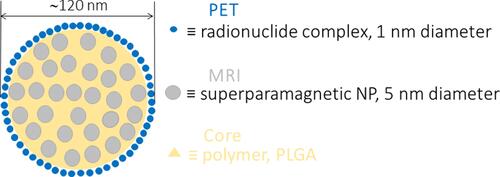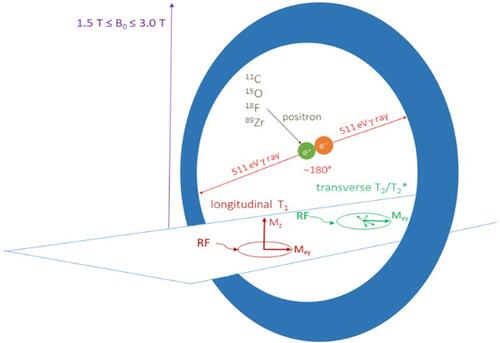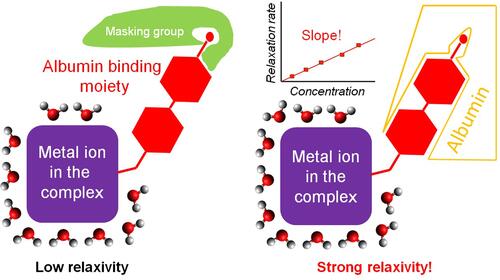Figures & data
Figure 2 Solvent molecules (H2O) and the Fe(III) and N-methylacetohydroxamate (NMA–) complex, as well as the specific chemical interactions. The ORTEP view [source: Mercury program 3.10.1 (Build 168220).] of the [Fe(NMA)3] crystal structureCitation22 was generated using atomic coordinates taken from the CSD database (structure code: CCDC 1538337).
![Figure 2 Solvent molecules (H2O) and the Fe(III) and N-methylacetohydroxamate (NMA–) complex, as well as the specific chemical interactions. The ORTEP view [source: Mercury program 3.10.1 (Build 168220).] of the [Fe(NMA)3] crystal structureCitation22 was generated using atomic coordinates taken from the CSD database (structure code: CCDC 1538337).](/cms/asset/8ffdc691-2c71-4334-aec6-3003b8d21b4b/dijn_a_12192569_f0002_c.jpg)
Figure 4 Ideological presentation of an MRI/PET probe based on chelated radionuclides (metal complex for PET imaging) and superparamagnetic iron oxides (SPION for MRI contrast).

Table 1 Relaxivity of MRI Contrast Agents
Table 2 PET Isotopes and Their Half-Lives
Table 3 PET/MRI Bimodal Probes
Table 4 Doses of Bimodal Probes Injected in vivo Compared with the Amounts Tested for Cytotoxicity in vitro
Figure 5 Ratios (R) of labeling time/half-life and the radiochemical yields of some reported bimodal probes. R was counted for probes with a known labeling time.

Table 5 Bioresponsive Characteristics of MRI/PET Probes
Table 6 Main Features of Classic Complexes and Nanoparticles as Potential MRI-PET Bimodal Probes


